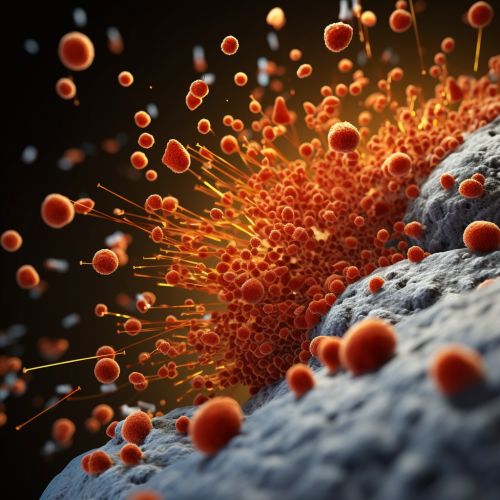Targeted Drug Delivery
Introduction
Targeted drug delivery, also known as smart drug delivery, is a method of delivering medication to patients in a manner that increases the concentration of the medication in some parts of the body relative to others. This method of delivery is largely founded on the concept of pharmacokinetics, the study of how drugs are absorbed, distributed, metabolized, and excreted.


Mechanism of Action
The primary goal of targeted drug delivery is to increase the efficiency of drug delivery, thereby reducing the dosage required and minimizing side effects. This is achieved by the use of drug carriers, which are designed to carry the drug to the intended site of action. These carriers can be designed to interact with specific receptors or enzymes that are present in the target area, allowing for a more precise delivery of the drug.
Types of Targeted Drug Delivery
There are several types of targeted drug delivery systems, each with their own unique mechanisms and applications.
Passive Targeting
Passive targeting relies on the natural behavior of the drug and the body. This method utilizes the Enhanced Permeability and Retention (EPR) effect, a phenomenon observed in solid tumors where the rapid growth of cancer cells leads to leaky blood vessels, allowing for the accumulation of drug-loaded nanoparticles.
Active Targeting
Active targeting, on the other hand, involves the use of specific ligands attached to the drug carrier that bind to specific receptors on the target cells. This allows for a more precise delivery of the drug, reducing the likelihood of off-target effects.
Magnetic Drug Targeting
Magnetic drug targeting involves the use of magnetic particles attached to the drug. These particles can be guided to the target area using an external magnetic field, allowing for a highly precise delivery of the drug.
Applications
Targeted drug delivery systems have a wide range of applications in the field of medicine, particularly in the treatment of diseases such as cancer, cardiovascular diseases, and neurological disorders.
Cancer Treatment
In cancer treatment, targeted drug delivery systems are used to deliver chemotherapy drugs directly to the tumor, reducing the systemic toxicity associated with traditional chemotherapy.
Cardiovascular Diseases
In the treatment of cardiovascular diseases, targeted drug delivery systems can be used to deliver drugs directly to the heart or blood vessels, reducing the risk of systemic side effects.
Neurological Disorders
In the treatment of neurological disorders, targeted drug delivery systems can be used to deliver drugs across the blood-brain barrier, a major challenge in the treatment of diseases such as Alzheimer's and Parkinson's.
Future Directions
The field of targeted drug delivery is constantly evolving, with new technologies and strategies being developed to increase the efficiency and precision of drug delivery. One such area of research is the development of nanotechnology-based drug delivery systems, which have the potential to revolutionize the field of medicine.
